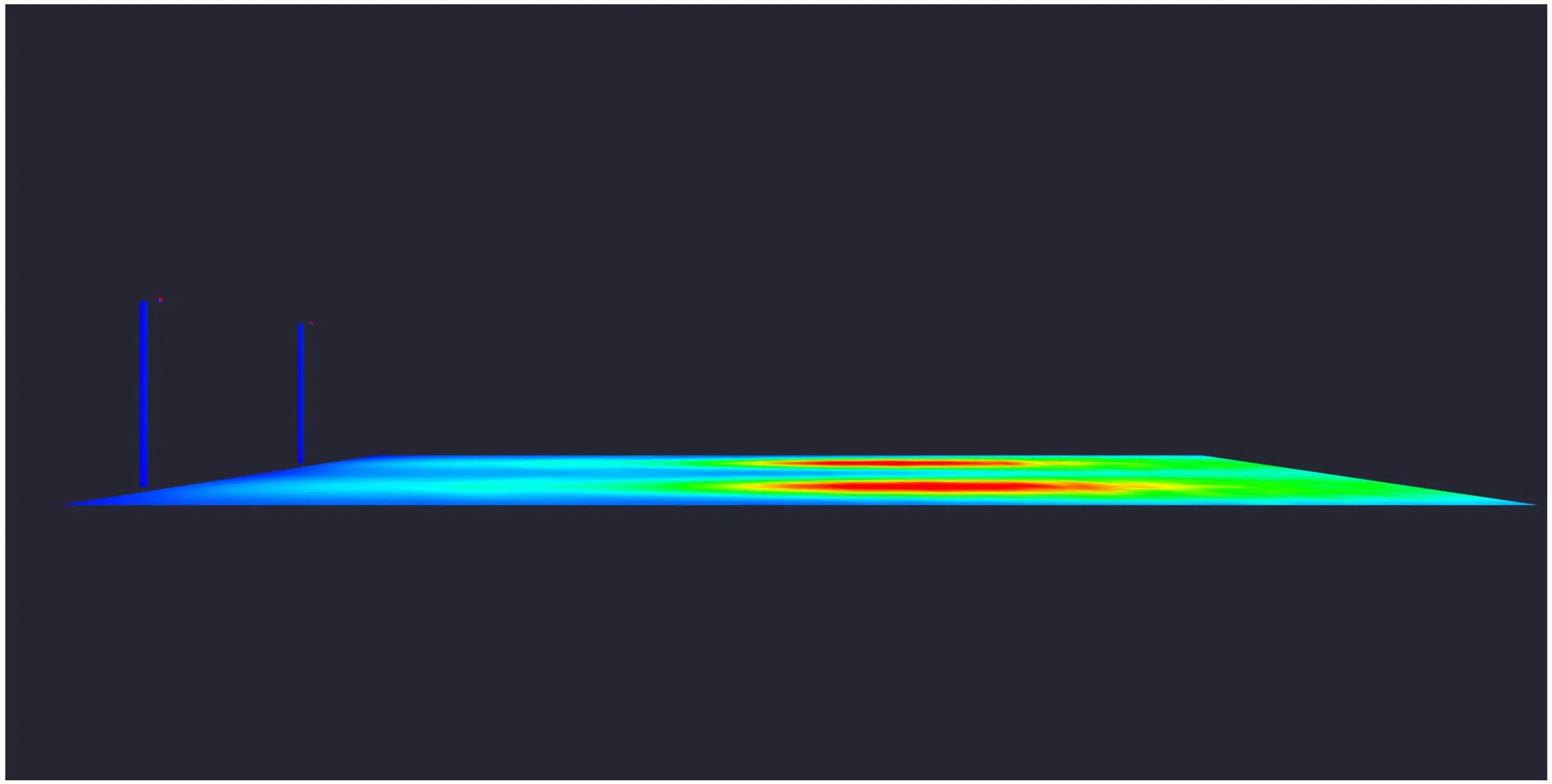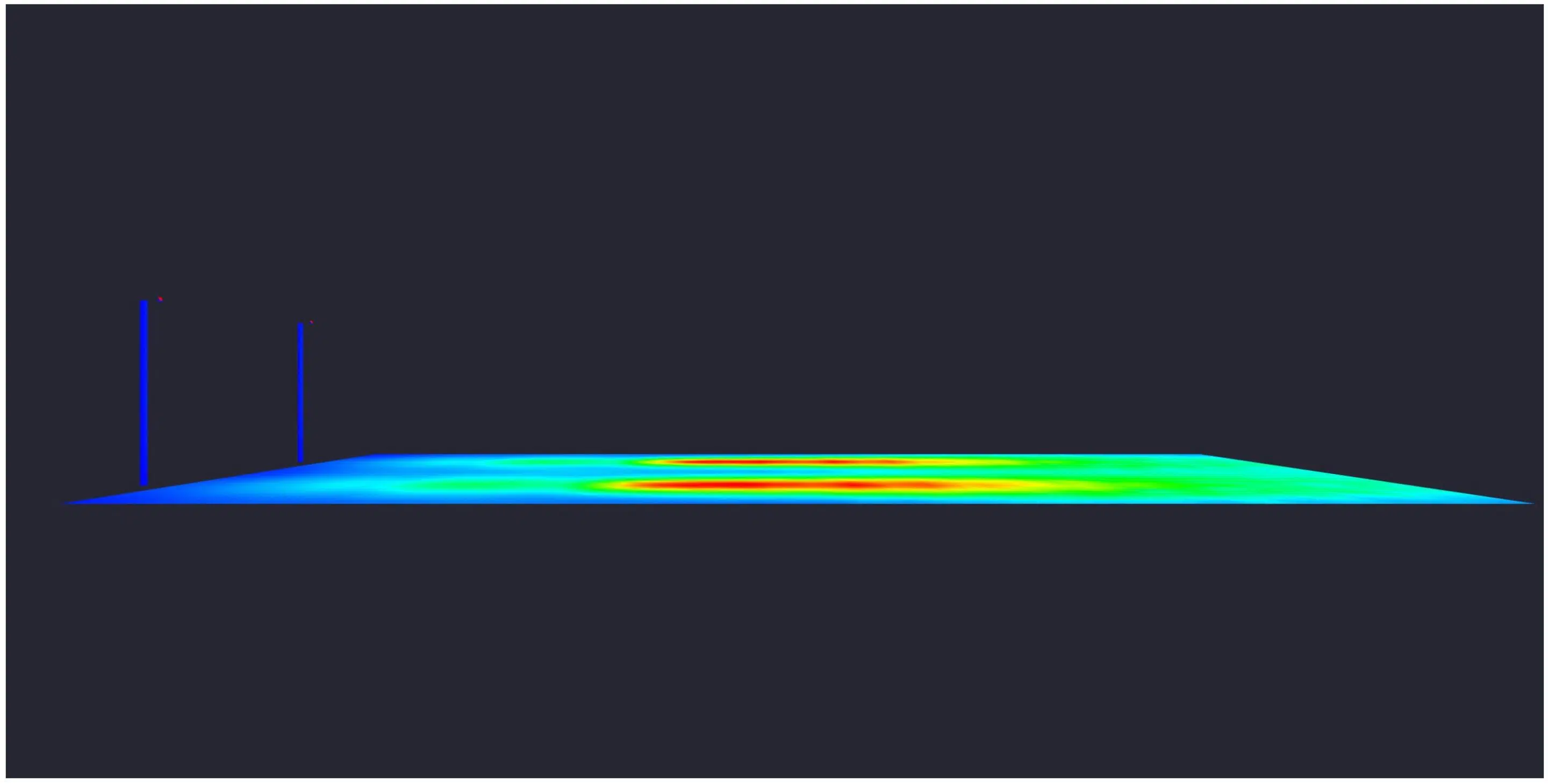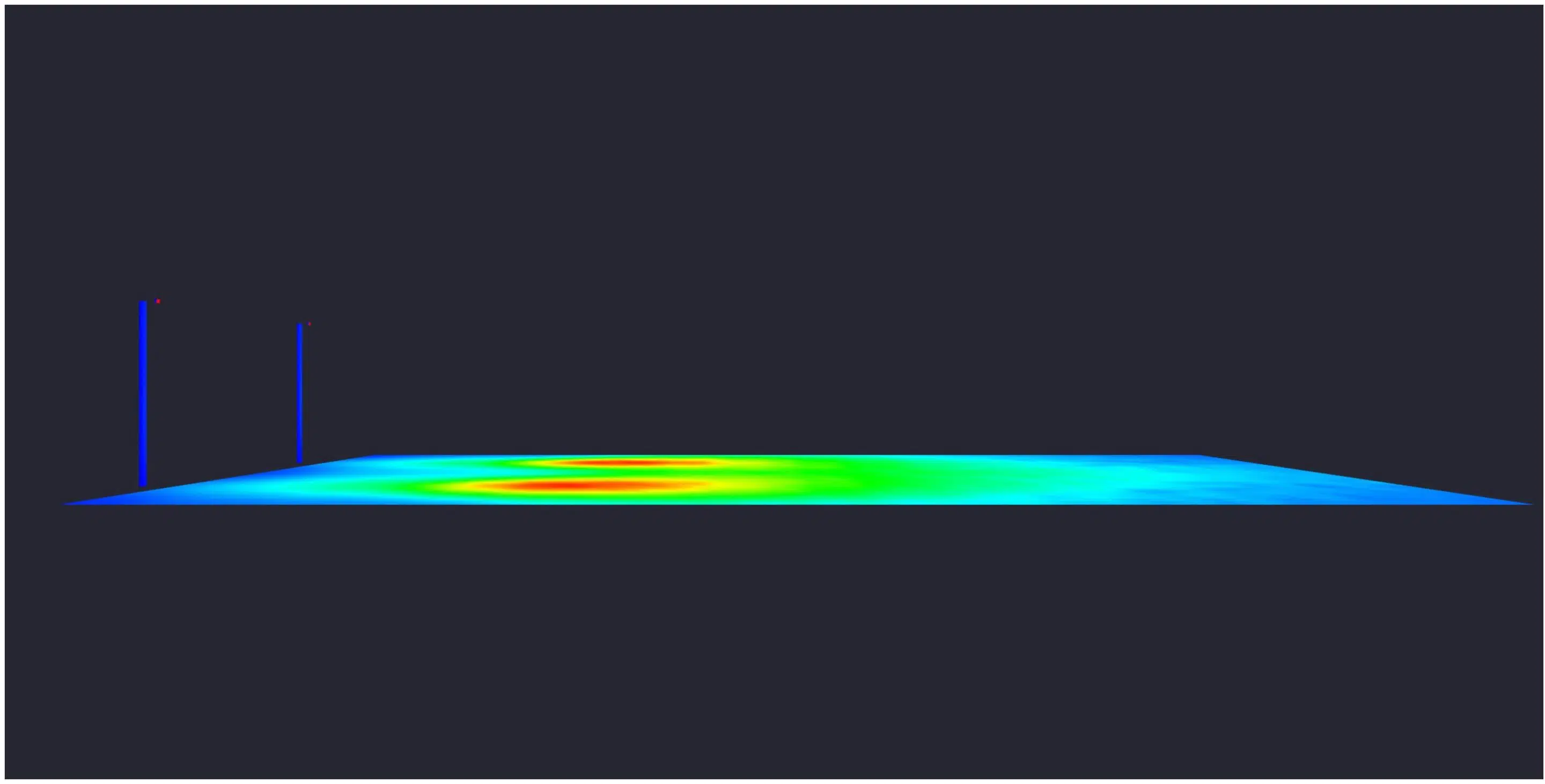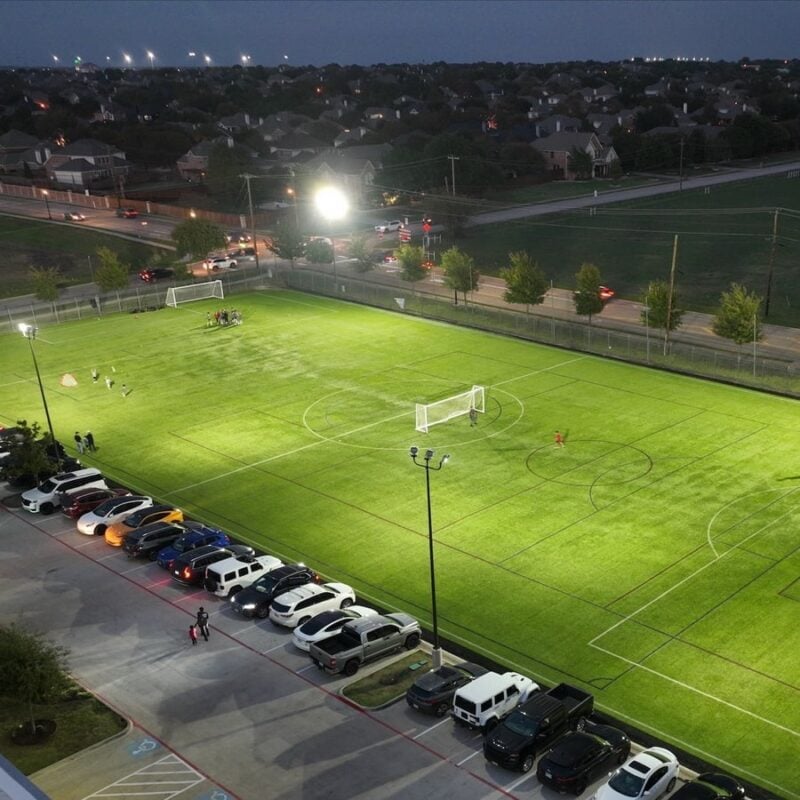Buyers Guide to LED Stadium and Sports Field Lighting
8 Tips for Sports Field Lighting
Outdoor athletic events draw massive crowds worldwide, from weekend Little League games to professional soccer matches and evening concerts. Night events require powerful illumination across expansive outdoor spaces, with stadium lighting systems mounted on light poles for sports and athletic fields reaching 100 feet tall and supporting up to 12 fixtures each. Stadium operators know the crushing costs of HID lights like Metal Halide and High-Pressure Sodium. These outdated systems suffer from short lifespans, severe light degradation at half-life, strike times extending 30 minutes, and astronomical energy bills. Ball fields and stadiums could greatly benefit from using LED Lights. Modern stadium fixtures replace the most powerful metal halide systems while delivering 60% or greater energy savings. Beyond energy efficiency, stadium owners gain immediate operational advantages:- HID lights require extended warm-up periods to reach full brightness. Stadium fixtures achieve maximum output instantly, eliminating delays and improving game operations.
- Advanced technology extends operational life to 100,000 hours in premium models. This virtually eliminates maintenance requirements since lamp replacement becomes rare.
- Superior light quality maintains consistency throughout the fixture’s lifespan. Light degradation occurs slowly compared to traditional systems.
- Full dimming capability provides energy control impossible with HID systems. Operators can adjust lighting levels based on events and further reduce energy consumption.

Click Here to See All Our LED Outdoor Sports Field Lights
1. Lighting Plans are the Key to Success
Selecting fixtures by wattage alone guarantees poor results. Lumens provide better guidance since they measure actual light output rather than power consumption. However, without understanding optical distribution and beam control, even lumen-based decisions often disappoint. We frequently solve faiLED installations where incorrect fixtures created uneven lighting and dark zones. Professional Stadium or Sports Field Lighting Plan development starts every successful project. Computer modeling shows exact field illumination before purchasing equipment. Design software adjusts fixture quantities, positions, and aiming until achieving proper light levels and uniformity. The plan specifies optimal optics, required lumens, and precise aiming angles for each fixture. Takeaway: Photometric analysis proves adequate brightness levels and demonstrates balanced, uniform illumination across playing surfaces before installation begins.
2. LED Fixtures are Powerful Enough to Replace Metal Halide
Stadium retrofits succeed when new fixtures match existing pole configurations without adding hardware. Our replacement guidelines ensure adequate light output from current mounting positions:- 1000 Watts Metal Halide: 50,000 to 60,000 lumens required
- 1500 Watts Metal Halide: 80,000 to 90,000 lumens required
- 2000 Watts Metal Halide: 110,000+ lumens required

3. Narrow Beam Optics are the Key to Lighting a Sports Field
Stadium lighting differs fundamentally from standard outdoor lights through precise beam control and targeted illumination. Wide-angle flood lighting spreads light inefficiently across large areas. Professional stadium systems use narrow beam angles to focus each fixture on specific field zones, creating precise lighting zones where each fixture has a defined purpose. Multiple narrow beams combine to achieve required light levels and uniformity across playing surfaces without wasted light or excessive spill. Takeaway: Beam angle selection directly impacts lighting quality and energy efficiency. We simplify optic selection through professional design services.NEMA Beam Spread Classifications
- Very Narrow:
- NEMA Type: 1
- Beam Spread: 10° – 18°
- Narrow:
- NEMA Type: 2
- Beam Spread: 18° – 29°
- Medium Narrow:
- NEMA Type: 3
- Beam Spread: 29° – 46°
- Medium:
- NEMA Type: 4
- Beam Spread: 46° – 70°
- Medium Wide:
- NEMA Type: 5
- Beam Spread: 70° – 100°
- Wide:
- NEMA Type: 6
- Beam Spread: 100° – 130°
- Very Wide:
- NEMA Type: 7
- Beam Spread: 130° and above
A Real-World Example of How Optics Work
Five computer simulations demonstrate beam angle impact on field illumination. Each scenario lights a 100 ft by 200 ft area using two fixtures mounted at 30 feet. Fixture positions and aiming remain constant while beam angles vary. All examples use 400 watt stadium fixtures.10 Degree Optic

15 Degree Optic

30 Degree Optic

45 Degree Optic

60 Degree Optic

4. How Many Foot Candles Do You Need to Light Up Your Sports Field?
Professional lighting design requires specific foot candles based on competition level and broadcast requirements. Our experience designing stadium conversions provides these field-tested recommendations:Baseball and Softball Fields
- Collegiate (Televised):
- Outfield FC: 70
- Infield FC: 100
- Outfield FCs (Max/Min): 2.5
- Infield FCs (Max/Min): 2
- Collegiate:
- Outfield FC: 50
- Infield FC: 70
- Outfield FCs (Max/Min): 2.5
- Infield FCs (Max/Min): 2
- High School:
- Outfield FC: 30
- Infield FC: 50
- Outfield FCs (Max/Min): 2.5
- Infield FCs (Max/Min): 2
- Little League:
- Outfield FC: 30
- Infield FC: 50
- Outfield FCs (Max/Min): 2.5
- Infield FCs (Max/Min): 2
- Recreational:
- Outfield FC: 20
- Infield FC: 30
- Outfield FCs (Max/Min): 2.5
- Infield FCs (Max/Min): 2
Football Fields and football stadium lights
- Recreational Football: 20 – 30 foot candles
- Middle School: 30 – 50 foot candles
- Small High School: 30 – 50 foot candles
- Larger High School: 50 – 70 foot candles
- College: 80 – 150 foot candles
Soccer Fields
- Recreational Soccer: 20 – 30 foot candles
- Middle School Soccer: 30 – 50 foot candles
- Small High School Soccer: 30 – 50 foot candles
- Larger High School Soccer: 40 – 70 foot candles
- College: 50 – 100 foot candles
Tennis Courts
- Recreation Level: 20 – 35 foot candles
- Club Level Tennis: 30 – 60 foot candles
- Competition Level Tennis: 50 – 80 foot candles
- College / NCAA Level Tennis: 90 – 120 foot candles
What is the Lumen Output of LED Stadium Lights?
Stadium fixtures begin at approximately 60,000 lumens for metal halide replacement and extend to 150,000 lumens for premium applications. Raw fixture lumens differ significantly from actual field illumination measured in foot candles.
5. What is the Best Color Temperature for Stadiums and Sports Fields?
Commercial fixtures span color temperatures from 2700K to 6500K. Stadium applications perform best with 4000K or 5000K options. Color temperature affects visibility, camera performance, and spectator experience. Takeaway: 98% of our stadium customers choose 5000K color temperature. We recommend this specification for metal halide replacement based on superior visibility and broadcast compatibility.6. Make Sure the Lights Have Been Tested to Withstand Rain and Snow
Weather resistance requires proper IP Rating certification. Outdoor stadium environments demand minimum IP65 protection extending to IP68 for extreme conditions. IP69K wash-down ratings exceed outdoor requirements and increase costs unnecessarily. Most stadium fixtures on our site meet or exceed IP65 standards. Takeaway: Specify minimum IP65 rating or higher for reliable outdoor operation in all weather conditions.7. What is CRI and How Does it Matter for Sports Field and Stadium Lighting?
Color Rendering Index measures light quality while lumens measure light quantity. High-quality light improves visibility, reduces required light levels, and enhances broadcast quality. Players and spectators appear more natural under proper color rendering.- High-Pressure Sodium systems produce yellowish 2200K light with poor color rendering that distorts natural colors.
- Modern fixtures deliver CRI ranging from 70 to 95+ with superior color accuracy and natural appearance.

